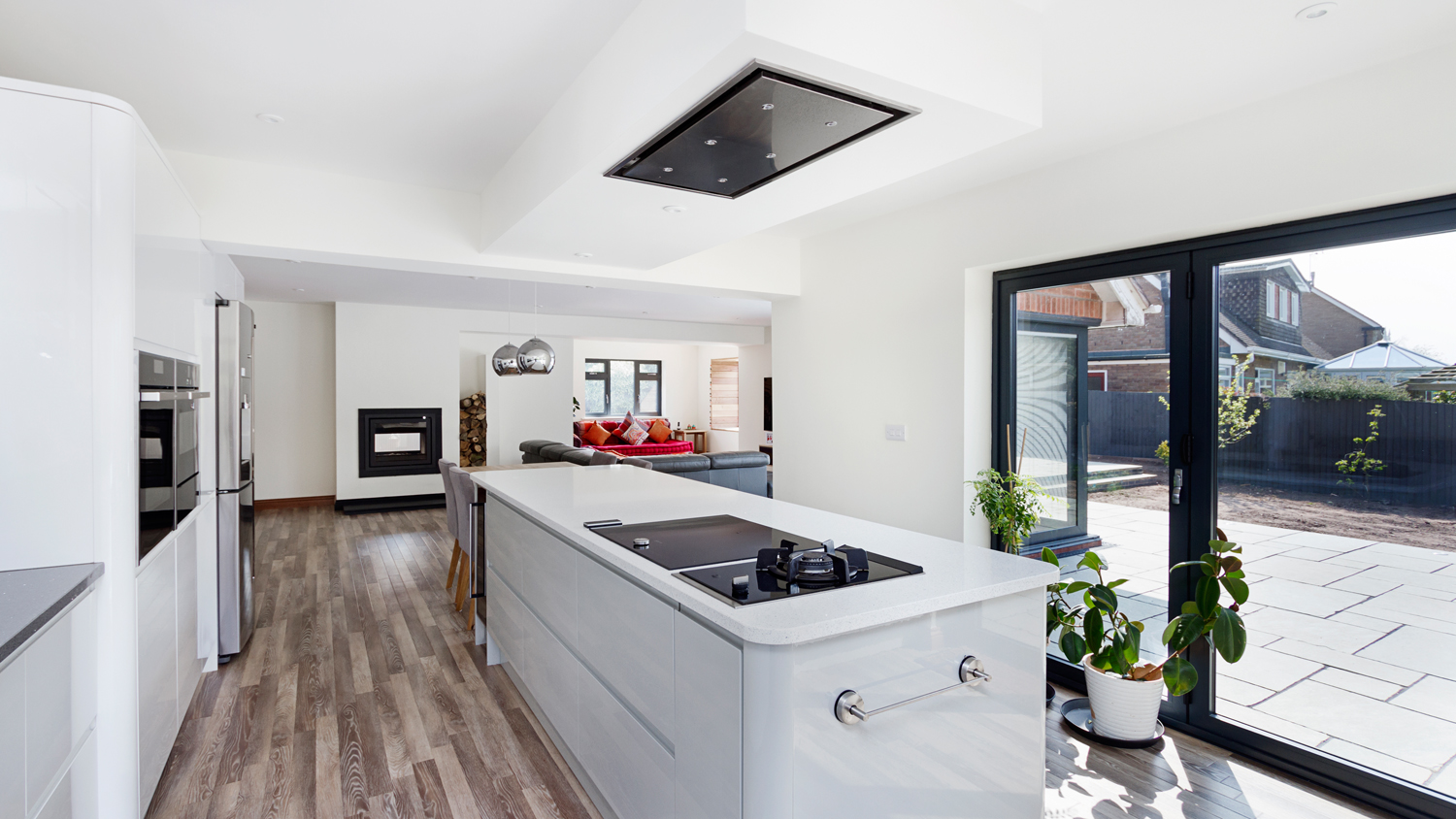
So, you’re considering extending your home?
Most people are full of enthusiasm and keen to crack on with any new project, but with a little thought, careful planning and patience you will be much more likely to get your desired end result. Before you get carried away with the excitement of the project and start choosing new kitchens or furniture, there are many, more important things that you need to know and understand.
Here are just 10.
1. Quality
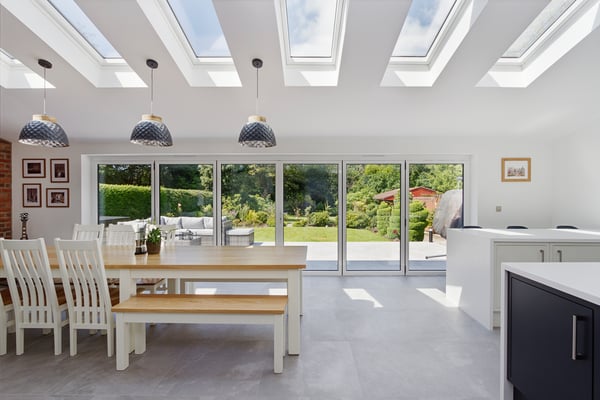 One of the first things we ask clients is "why do you want the extension?" There are a multitude of answers but they usually fit in with one or a few categories:
One of the first things we ask clients is "why do you want the extension?" There are a multitude of answers but they usually fit in with one or a few categories:
a) This your forever home and you’re extending to maximise the space for your long term enjoyment.
or:
b) You want to change the building into your final dream property?
You may already have your home in a great location with no intent on moving again. If you’re settled in your location the reason to extend may simply to be gain extra space and create your dream home. If that’s the case the project is much more about maximising the value of day to day experience of your home, and usually a better quality building would be required.
c) You want to add value to you home.
If the project is all about increasing the property value, it would be worth speaking to an estate agent to get a feel for what value potential your home has. Inevitably there will be a glass ceiling in the area, and in relation to your property plot and setting. A careful balance needs to be struck between producing a high standard of finishes and not spending more than will be recouped upon sale.
d) You need to create much needed extra space in the short term until you can afford to move.
Think how much you will spend on your extension against the cost of moving.Consider that after removal costs, legal fees, stamp duty and resettlement costs, you're going to want to redecorate and make some changes to the property you move into. All of that money is often dead money by the time you're up and running. How far would that money go in improving the home you're in. If you would be altering the property you are considering moving to, then spending that extra money on improving the property you're in could make a home that your would never consider leaving!
e) There's just that bit of your home that niggles you every time you see it / use it.
Unless you have a home you really hate (in which case move now!) then for a modest budget, you can usually make some really effective alterations that provide the space you want and makes the whole property work for you, look and flow much better.
2. Cost
 What budget do you have to deliver the project?
What budget do you have to deliver the project?
It's time to be honest and up front.
Many people clam up at the mere mention of the budget but the purpose of setting a proper budget is so that design time isn’t wasted and so the final design is something that can be afforded by you, and actually delivered.
Your budget is not to do with setting architectural fees, or your consultants and contractors spending up to the top end of your budget. If you know from the outset what your budget is, and what you would be prepared to spend, then a professional architect will always try to bring projects in under budget and provide best value.
However, most people want more than can actually achieve with their budget. Unless you tell your architect what your budget is, then there is no way that they can tell you whether your expectations are realistic.
As exciting as your project may be, try to be realistic and honest about the money available. Another point to remember is that generally speaking extensions and alterations are not zero VAT.
Therefore bear in mind that your spending power is reduced by 1/6th of your budget. VAT will be charged on all builder's fees, materials, building control fees and professional fees. It is commonplace in the building industry for all prices to be quoted nett of VAT.
The good news is that there is no VAT charged on planning application fees, works to adjust a home to suit the requirements of a person with disabilities or works to create a new dwelling. However legislation changes all the time, it is worth consulting HMRC for the latest information.
As a rule of thumb indication of the overall cost of your extension, you can expect to pay approximately £1000 to £1250 per square metre for the building cost. This will of course vary in relation to the quality and complexity of construction.
3. Time

How long is it all going to take?
A typical project might take;
-
1 ½ months survey and design time prior to planning
-
2 ½ months in the planning process.
-
1 ½ months to produce working drawings and submit for building control for approval.
-
2 to 4 weeks to tender a project
-
2 weeks to mobilise a contractor to start.
If there are additional requirements associated with gaining planning permission and building control approval, this can delay the process. However, a good architect will usually foresee planning and building control issues before they arise and be able to address them when they do.
Try to plan when you want the work to commence on site. For obvious reasons most want their projects to start in the spring or summer. Bear this in mind and allow time to design, get your permissions, tender and get the builder scheduled.
When the project starts on site the duration of the build will depend on the size of the project, whether works need to be phased (such as when you are still living in the home through construction) and also the complexity of the project.
Other impacts on programme are the 'good old British weather' and the availability of the contractor’s resources.So before contractors even start on site it could take a minimum of 6 ½ months unless the proposal is permitted development. For permitted development projects you can reduce the programme by 2 ½ months.
Key point: If you want to be "in for next Christmas" like everyone else:
start now!
4. Cost, quality, time triangle.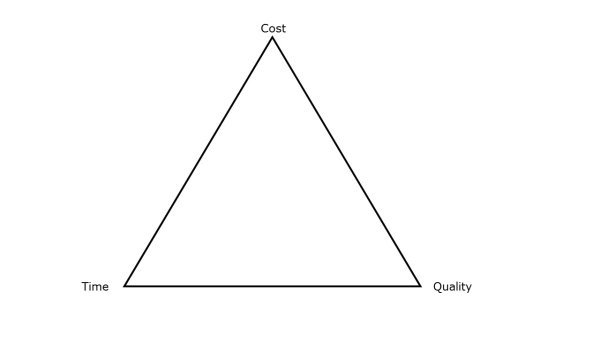
You might want it all, but something will have to give. A great way to establish the most important criteria for you and your project is to consider the cost, quality, time triangle.
This will place some clarity and direction into your proposal and brief to the design team. It will not only help you to make decisions, but also guide your architect on your preferences.Use the triangle in the diagram below and put a dot on the paper in relation to what is the most important thing to you with your project.
A time focused project will have a spot around the time point.For a cost time balance, the spot will be along the line between the cost and time points. A perfectly balanced project would have a dot right in the middle.
5. Services
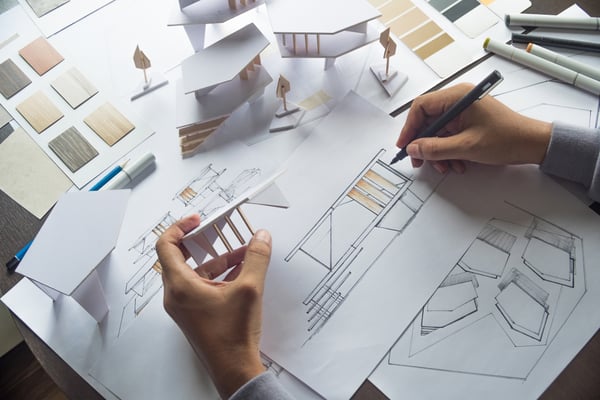 The services within your home refer to the supply of electricity, gas, water and drainage.
The services within your home refer to the supply of electricity, gas, water and drainage.
Take a look at the space that you want to develop.Is the the area where you’re planning to extend going to affect the services to the property? If the answer is yes then you may need to think about moving the water, electric, or gas meters?
Don’t forget the drainage to the property. Is there drainage in the area of the proposed works? Drainage is sometimes adopted by the local water board, particularly when shared with the neighbours. If you intend your extension to be built over an adopted sewer, a 'build over sewer' application will be necessary. If you’re unsure this is a question to ask your architect.
6. Neighbouring properties
Ask yourself will your proposal affect the neighbouring properties?
-
Do you share a party wall?
-
Could there be problems with overlooking?
-
Could they complain about their “Right to light?”
-
Are there any significant trees on site that may need to be removed? Whose trees are they? Are they protected?
-
Who owns the boundary fence, wall or hedge?
-
Would your addition overshadow their garden?
7. Planning & Neighbours
If planning is required, the chances are nowadays your neighbours will object. People tend to object to planning applications as some sort of hobby.
If you don’t already speak to your neighbours, now is the time to start thinking about when you might have that cup of coffee to explain your project and get them on board. Typically this would be pre-planning.
However, don’t be alarmed if your neighbours are not in favour with your proposals and the conversation becomes heated. Not everyone can have a rational conversation about something they feel so strongly about. They will want to offload their concerns and objections to the proposal without listening carefully to the facts.
The key to this is to stay very calm and let them have their opinion. Make sure to record what they said and pass this to your architect. There may be an easy alteration that resolves their objection.
If your neighbours still object, ultimately they will have to raise a material planning objection and submit this to the local authority. It will fall to the case officer at the local planning authority to weigh up the objections, decide whether there are material considerations and determine if the proposals are acceptable.
8. Design style
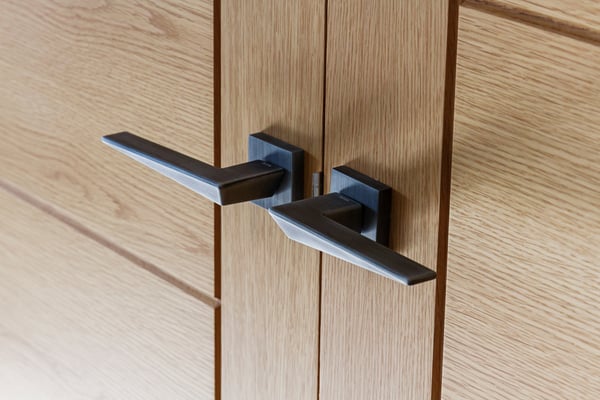 In your plan get some ideas about the styles that you like. If you’re unsure of what style you may want a great way to assemble some ideas is through Google Images, Pinterest and also Houzz.
In your plan get some ideas about the styles that you like. If you’re unsure of what style you may want a great way to assemble some ideas is through Google Images, Pinterest and also Houzz.
Pinterest is a great tool for gathering images as you can collect images on a virtual board and share these with your chosen architect.
9. The whole project
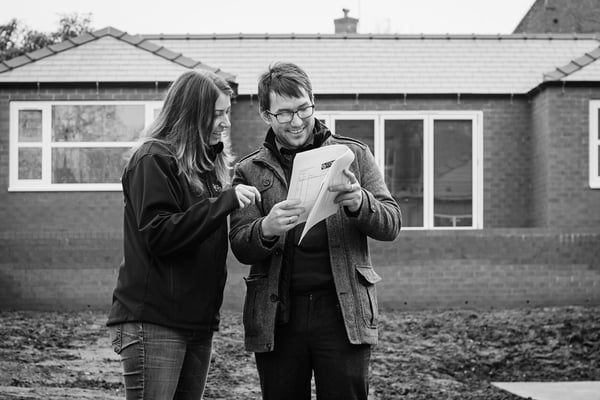 Try to think beyond the extension itself. When organising an extension you can get caught up with planning the extra space and forget about the rest of your existing home.
Try to think beyond the extension itself. When organising an extension you can get caught up with planning the extra space and forget about the rest of your existing home.
Your new extension can affect the rest of the house. Depending on what your new plans entail you may need to budget for spending money elsewhere to make improvements to the overall space.
For example, if you are planning on creating a new kitchen and family space that leads directly onto the garden, you may want to allocate money towards improving the garden, landscape design or even interior design of the house.
Whilst the house is being altered it is the perfect time to complete other works that create mess and disturbance. If you can, why not get all the improvements done together to save time, future mess and money? Plus the overall affect will be much more impressive and satisfying!
10. Sustainability
 Is your development an opportunity to improve the thermal performance and lower the running costs of your new home?
Is your development an opportunity to improve the thermal performance and lower the running costs of your new home?
Your existing house may currently suffer thermally in areas due to condensation, single glazed windows, poor ventilation and the lack of loft insulation. This could be an ideal time to improve the sustainability of your home whilst saving you money in the long term.
Older properties have the most to gain in this respect, there are many easy wins if you know what to look for.
Think about:
-
Cavity wall insulation
-
Loft Insulation
-
Energy efficient windows and doors
-
Upgrade your boiler & radiators – will your existing heating system be able to cope with your new plans?
-
Solar panels
-
Ground source or air source heat pumps?
Your architect should be able to advise on the best strategies to make a leap in thermal efficiency in your home. Sustainability aside, this is an opportunity to make your home much more comfortable.
Having read the above key points you have a great basis in which to form your brief with your architect. This will save time throughout the process allowing you to be clear about your expectations from the outset, and tasking your professionals to deliver the desired finished result.
If you have any questions just ask us in the comments below, or why not give us a call and let’s get your project started!
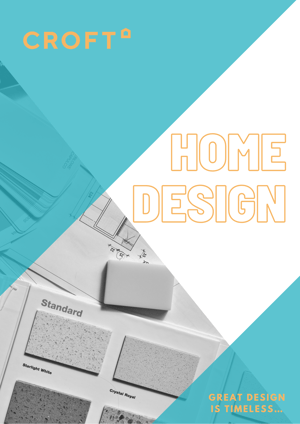 Want to find out more?
Want to find out more?
Download our FREE guide here.
10 Things you need to know before building a house extension
With this eBook, you’ll discover 10 quick essential tips for planning your home project. Before you get carried away with the excitement of the project digest this useful guide.
The result: you’ll learn essential information and know-how and to equip you with thought, careful planning and patience to get your desired end result.
Discover more and click on the image to download today.


